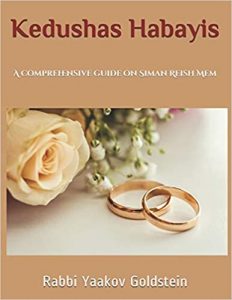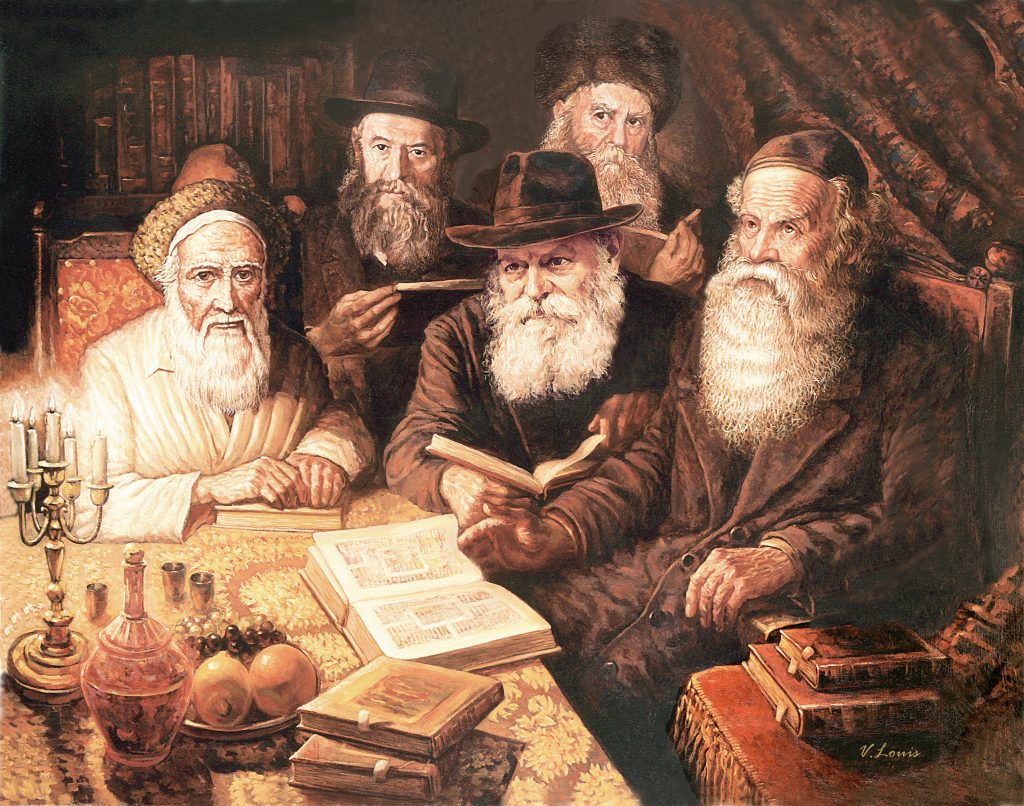
*The article below is an excerpt from the above Sefer
*As an Amazon Associate I earn from qualifying purchases.
3. The Holiness of intimacy – The Jewish & Torah Perspective:
A. Intimacy is a holy act when done properly:[1]
The Ramban states:[2] Know that intimacy is a holy and clean act when it is done at the proper time with the right intentions. A person should not think that intimacy is a degrading and dirty act, heaven forefend.[3] It is for this reason that the Torah refers to it as Da’as, which is a most holy act.[4] When done with holiness, there is no greater action of Kedusha than this,[5] and it is due to this reason that it must be done in privacy, as this great level of Kedusha cannot be revealed in the open.[6] [Accordingly, we find, that many refer to the marital bedroom as the couple’s personal Kodesh Hakedoshim.] In the words of the Alter Rebbe:[7] “Some in the world belief that marital intimacy is a repulsive act that is to be looked upon with disdain, as it requires a man to immerse afterwards. In truth, this is incorrect, as intimacy is a great act, and also above in heaven it’s viewed as a great act.” It is only the gentile philosophers,[8] and some Jewish scholars who mistook after him,[9] who stated that intimacy is an impure and shameful act, as these gentile philosophers were referring to themselves and the way that they perform it.[10] To believe such a thing is tantamount to heresy, as Hashem did not create something of necessity that is considered abominable or shameful. The bottom line is that this matter is all dependent on the person, and he has the ability to turn his reproductive organs into an abode of holiness or an abode of impurity.[11]
B. The Keruvim:[12]
A proof to the fact that intimacy is considered a holy act in the eyes of G-d, is the fact that the Keruvim, which were found in the Holy of Holies, were made as male and female and would move into an intimate position of intercourse. Why would G-d make an image of such an abominable act within the Holy of Holies? The Amonites, when they entered the Holy of Holies and saw the Keruvim in an intimate position with each other, blasphemed G-d and said, “Look at what the G-d of the Jews thinks about.” The deep secret behind this is that in truth intimacy is a very holy act, and therefore, even today the Shechina resides within the act of a husband and wife when done with holiness.
C. Holy intimacy versus Putrid – A lesson from one’s diet:[13]
Just as there exists healthy foods and unhealthy foods, so too there exists healthy and unhealthy intimacy. When one eats healthy food there is nothing greater for his body, while when one eats unhealthy foods it ruins the body. Similarly, intimacy which takes place in a Kosher and holy method is beneficial for the body and soul, while if it takes place in a materialistic or forbidden fashion, there is nothing more damaging.
D. The Divine presence dwells during a Holy session of intimacy:[14]
When intimacy is performed through sanctification and holiness the Shechina dwells upon the couple’s union, [similar to how the Shechina dwelled on the Keruvim[15]].
E. One’s reproductive organs can become an abode for holiness – A story with the Or HaChaim Hakadosh:[16]
The Rebbe Rayatz once related in the name of the Rebbe Maharash that upon being approached by an individual asking regarding Shemiras Habris, the Rebbe Maharash replied that it has to be similar to that of the Or Hachaim Hakadosh. The Or Hachaim once traveled with a caravan in the desert to a certain destination. Upon the arrival of Shabbos, he did not want to travel, but the caravan refused to stop their journey for the day, and thus forced him to remain alone in the wilderness. A lion which saw the Or Hachaim began to approach him [in a threatening manner]. The Or Hachaim went on to show the lion his Bris Mila which caused the lion to become subdued, and not only did the lion not harm him but he even stood guard to protect him from all the other animals. After Shabbos the Or Hachaim rode on the lion until he reached the caravan. The reason the Or Hachaim showed the lion his Bris Mila is because the subjugation and control of this limb is what truly exemplifies the hierarchy of man over animal, and the Tzelem Elokim which is apparent by man.
F. The intimacy and union of souls of husband and wife in Gan Eden:[17]
See Halacha 14, even in heaven the souls of a husband and wife engage in intimacy. This shows that from a Jewish perspective, intimacy is not just a putrid act necessary for physical procreation, but rather an entire spiritual service that is so sanctified it is practiced even in the holiest of places, in the garden of Eden, where the souls enter to receive their reward from G-d.
______________________________________________________[1] Menoras Hama’or Ner Gimel K’lal Vav 5:6
[2] Igeres Hakodesh of the Ramban Chapter 2; brought in Siddur Ya’avetz Mosach Hashabbos Mitos Kesef 3:1; See also Menoras Hama’or Ner Gimel K’lal Vav 5:6 for a similar statement
[3] Siddur Ya’avetz Mosach Hashabbos Mitos Kesef 3:1
[4] Menoras Hama’or Ner Gimel K’lal Vav 5:6; Siddur Ya’avetz Mosach Hashabbos Mitos Kesef 3:1-2
[5] Igeres Hakodesh of the Ramban Chapter 2; Menoras Hama’or Ner Gimel K’lal Vav 5:6; Siddur Ya’avetz Mosach Hashabbos Mitos Kesef 3:3
[6] Siddur Ya’avetz Mosach Hashabbos Mitos Kesef 3:3
[7] Torah Or Esther p. 184
[8] Igeres Hakodesh of the Ramban Chapter 2 that so writes Aristotle
[9] Igeres Hakodesh of the Ramban Chapter 2 that so wrote the Rambam in Morah Nevuchim being that he trusted the words of Aristotle too much
[10] Siddur Ya’avetz Mosach Hashabbos Mitos Kesef 3:3
[11] Igeres Hakodesh of the Ramban Chapter 2
[12] Igeres Hakodesh of the Ramban Chapter 2
[13] Siddur Ya’avetz Seder Hanhagas Leil Shabbos
[14] Rebbe Akiva in Sotah 17a; Ramban in Igros Hakodesh 2; Siddur Ya’avetz Mosach Hashabbos Mitos Kesef 3:2; Ma’amarei Admur Ha’emtzai Shemos 1:5; See Reishis Chochma 16:2; Zohar Kedoshim p. 81a; Sheyikadesh Atzmo [Nachmanson-2015] 14:2
[15] Igeres Hakodesh of the Ramban Chapter 2
[16] See Toras Menachem 1:110; See also Sefer Os Bris Kodesh p. 10a [Rebbe Yosef Kanafo, Morocco[; Me’at Mayim p. 61 [Moshe Amar]
[17] See Ma’amarei Admur Hazakein p. 151 “Lehavin Inyan Zivug Haneshamos”; Derech Mitzvosecha Peru Urevu p. 3a; Sefer Hachakira p. 56a; Eitz Chaim Sha’ar Tikkun Nukvah 34:1; 39:11; Eitz Hada’as Tov Parshas Ki Savo p. 27; Ta’amei Hamitzvos p. 5; Zohar Bereishis p. 21; Lech L’cha; Rav Poalim 2 Sod Yesharim 2


 Donate
Donate

Leave A Comment?
You must be logged in to post a comment.